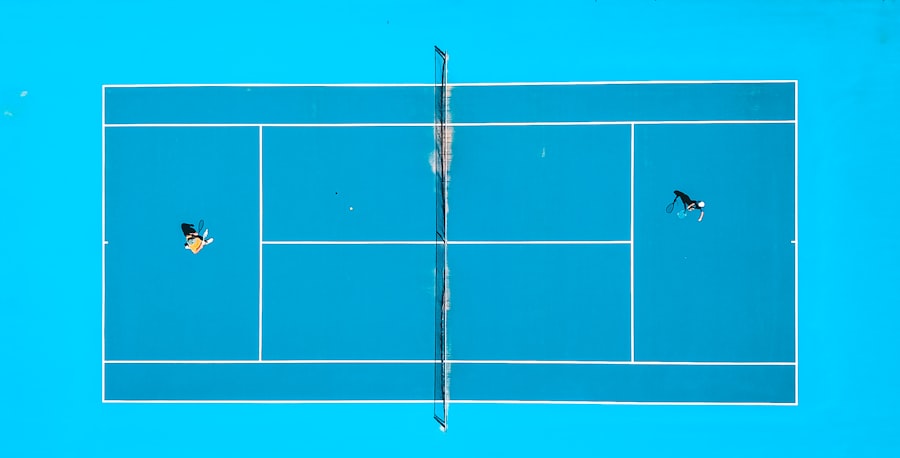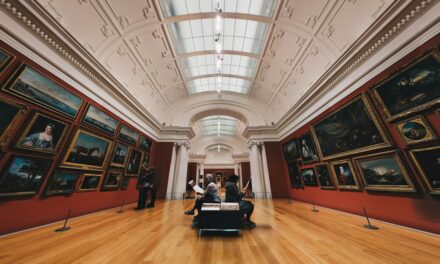Yves Klein was born on 28 April 1928 in Nice, France. He was the eldest of three sons born to Fred Klein and Marie Raymond. Both of his parents were artists, with his father renowned for his landscapes and genre paintings.
Klein’s artistic upbringing significantly influenced his own creative development. He demonstrated an early interest in art and commenced his studies at the École Nationale de la Marine Marchande in 1942. However, his education was disrupted by the Second World War, during which he and his family were compelled to seek refuge in Switzerland.
Following the war, Klein returned to France and resumed his education at the École Nationale des Langues Orientales, where he studied judo and developed a keen interest in Eastern philosophy and mysticism. This fascination with Eastern thought would later inform his artistic practice. In 1946, he enrolled at the École Nationale Supérieure des Beaux-Arts in Paris, focusing on painting and drawing.
It was during this period that he began to cultivate his distinctive artistic style, which would subsequently become known as International Klein Blue.
Summary
- Yves Klein was born in Nice, France in 1928 and studied at the École Nationale de la Marine Marchande and the École Nationale des Langues Orientales.
- International Klein Blue, a deep blue hue, was created by Klein in 1957 and became a signature colour in his work.
- Klein’s performance art and creation of “The Void” challenged traditional art forms and pushed boundaries in the art world.
- Yves Klein’s influence on contemporary art can be seen in the work of artists such as Marina Abramović and Yayoi Kusama.
- The Anthropometry series involved using nude female models as “living brushes” to create art, challenging societal norms and perceptions of the female body.
- Yves Klein’s legacy and impact on the art world continue to be celebrated and studied through the Yves Klein Archives.
The Birth of International Klein Blue
The Birth of IKB
Klein’s creation of IKB was a result of his experimentation with pigments and binders, which led him to develop a unique formula for the colour. He believed that IKB had a spiritual quality that transcended traditional notions of colour, and he often described it as “beyond dimensions.”
A Turning Point in Klein’s Career
The creation of IKB marked a turning point in Klein’s career and solidified his reputation as an innovative and boundary-pushing artist. He used the colour in a variety of mediums, including painting, sculpture, and performance art. IKB became synonymous with Klein’s work and was a key element in his exploration of the immaterial and the infinite.
A Captivating Colour
The colour’s intense vibrancy and depth captivated audiences and cemented Klein’s status as a leading figure in the art world.
Performance Art and The Void

In addition to his pioneering work with IKB, Yves Klein was also a trailblazer in the realm of performance art. In 1958, he presented his most famous performance piece, “The Anthropometries of the Blue Period,” at the Galerie Internationale d’Art Contemporain in Paris. The performance involved nude female models covered in IKB paint imprinting their bodies onto large sheets of paper while accompanied by a live orchestra.
This groundbreaking performance challenged traditional notions of art-making and pushed the boundaries of what was considered acceptable in the art world. Klein’s interest in performance art also led him to explore the concept of “The Void.” In 1958, he exhibited an empty gallery space at the Iris Clert Gallery in Paris, titling the exhibition “The Specialization of Sensibility in the Raw Material State into Stabilized Pictorial Sensibility.” The gallery was completely empty, except for a sign at the entrance that informed visitors they were entering “an invisible work of art.” This radical gesture was a bold statement about the nature of art and the role of the viewer in experiencing it. Klein’s exploration of performance art and The Void challenged conventional artistic practices and paved the way for future generations of artists to push the boundaries of their medium.
Influence on Contemporary Art
Yves Klein’s innovative approach to art-making had a profound influence on contemporary art and continues to inspire artists to this day. His use of IKB as a central element in his work challenged traditional notions of colour and its role in artistic expression. Klein’s exploration of performance art and The Void pushed the boundaries of what was considered acceptable in the art world and opened up new possibilities for artistic expression.
Klein’s impact on contemporary art can be seen in the work of artists such as Marina Abramović, who has cited him as a major influence on her own performance art practice. His use of IKB has also inspired countless artists to experiment with colour in new and innovative ways. Additionally, his exploration of the immaterial and the infinite continues to resonate with artists who seek to transcend traditional artistic boundaries and explore new realms of creative expression.
The Anthropometry series
One of Yves Klein’s most iconic bodies of work is his Anthropometry series, which he began in 1958. This series involved using nude female models as “living brushes” to create imprints on canvas using IKB paint. The performances were accompanied by live music and were a radical departure from traditional methods of painting.
The resulting works were vibrant and dynamic, capturing the energy and movement of the human body in a way that had never been seen before in the art world. The Anthropometry series challenged traditional notions of artistic creation and pushed the boundaries of what was considered acceptable in the art world. The use of nude female models as “living brushes” was a bold statement about the role of the body in artistic expression and challenged societal taboos surrounding nudity and sexuality.
The series remains a powerful example of Klein’s innovative approach to art-making and continues to captivate audiences with its boldness and originality.
Legacy and Impact

Challenging Conventions
His exploration of performance art and The Void pushed the boundaries of what was considered acceptable in the art world and opened up new possibilities for artistic expression.
Enduring Influence
Klein’s impact can be seen in the work of countless contemporary artists who have been inspired by his pioneering approach to art-making. His influence can also be felt in the realm of fashion, design, and popular culture, where his use of IKB has become synonymous with creativity and innovation.
A Lasting Legacy
Yves Klein’s legacy as an artist is one of boldness, originality, and boundary-pushing creativity that continues to inspire artists across the globe.
The Yves Klein Archives
The Yves Klein Archives were established in 1980 by Yves Klein’s widow, Rotraut Klein-Moquay, with the aim of preserving and promoting her late husband’s artistic legacy. The archives contain a wealth of material related to Klein’s life and work, including photographs, correspondence, sketches, and documentation of his exhibitions and performances. The Yves Klein Archives play a crucial role in ensuring that Klein’s legacy is preserved for future generations.
They provide scholars, curators, and art enthusiasts with valuable resources for studying and understanding Klein’s groundbreaking contributions to the art world. The archives also organise exhibitions and events dedicated to Klein’s work, furthering his impact on contemporary art and ensuring that his innovative spirit continues to inspire new generations of artists. In conclusion, Yves Klein’s impact on the art world is undeniable.
His innovative use of International Klein Blue, his groundbreaking performances, and his exploration of The Void have left an indelible mark on contemporary art. His legacy continues to inspire artists across the globe, and the Yves Klein Archives play a crucial role in preserving and promoting his artistic contributions for future generations to appreciate and learn from.
If you are interested in learning more about the art movements that influenced Yves Klein, you should check out the article on Post-Impressionism on Thinkofart.com. Post-Impressionism was a significant movement in the late 19th century that paved the way for modern art. Understanding the context of this movement can provide valuable insight into Klein’s work and artistic development. You can read the article here.
FAQs
Who is Yves Klein?
Yves Klein was a French artist known for his influential work in the fields of painting, sculpture, and performance art. He was a leading figure in the post-war European art scene and is best known for his monochromatic blue paintings and his development of the color International Klein Blue (IKB).
What is International Klein Blue (IKB)?
International Klein Blue (IKB) is a deep blue hue developed by Yves Klein in the late 1950s. It is a matte, ultramarine pigment that he patented as a specific shade of blue. Klein used IKB extensively in his artwork, and it has since become synonymous with his artistic legacy.
What are some of Yves Klein’s most famous works?
Some of Yves Klein’s most famous works include his monochromatic blue paintings, his “Anthropometry” series where he used nude female models as “living brushes” to create artwork, and his “Fire Paintings” where he used a flamethrower to create abstract compositions on canvas.
What was Yves Klein’s impact on the art world?
Yves Klein’s innovative use of color, performance art, and his exploration of the relationship between art and the viewer had a significant impact on the art world. He is considered a pioneer of minimalism, conceptual art, and performance art, and his work continues to influence contemporary artists.
What is Yves Klein’s legacy?
Yves Klein’s legacy is marked by his revolutionary approach to art, his exploration of color and space, and his boundary-pushing concepts of art and the artist’s role in society. His work continues to be celebrated and exhibited in major art institutions around the world, and he is remembered as a visionary artist of the 20th century.




